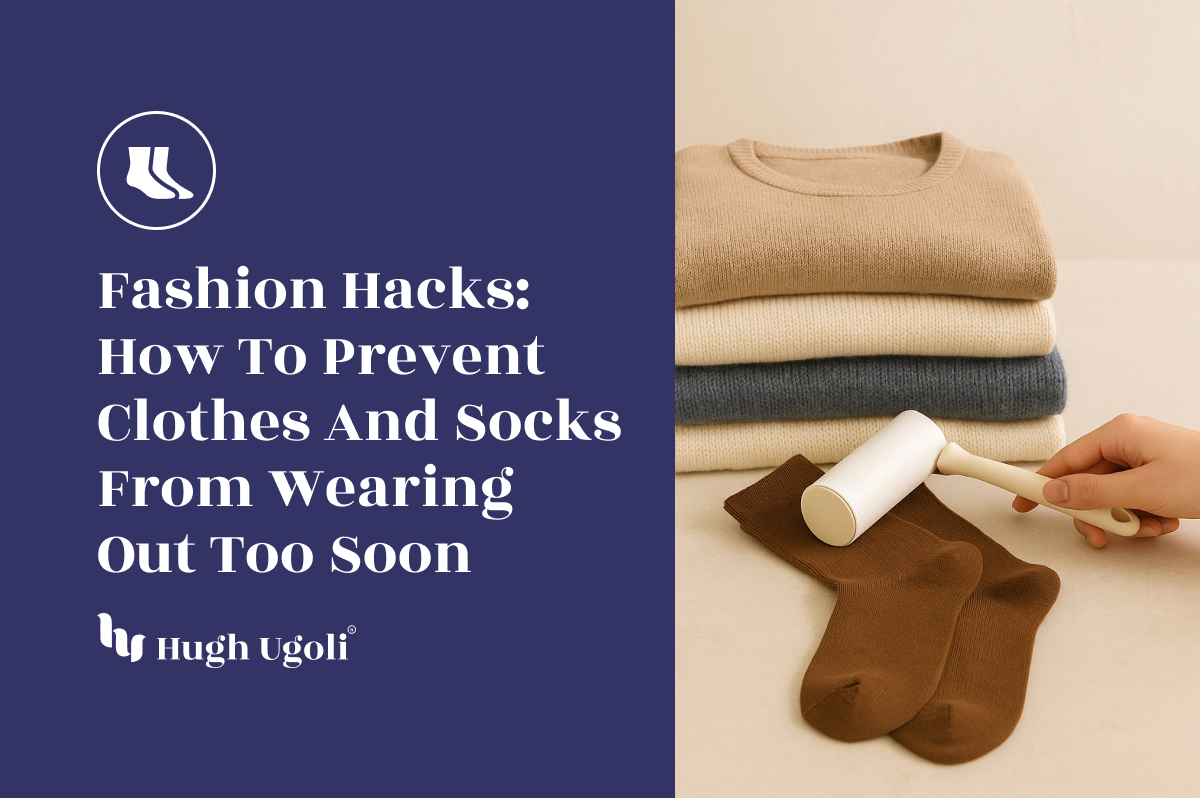We often overlook the importance of socks in our daily lives, hidden away in shoes and overshadowed by more visible outfit elements. However, the material of your socks can significantly impact your comfort, well-being, and productivity. This article delves into the science behind sock materials, exploring how the fibers that wrap around your feet can make a world of difference. From the anatomy of a sock to the properties of various materials, we'll guide you in choosing the perfect pair for any occasion.
The Anatomy of a Sock
Regarding comfort, the devil is in the details or, in this case, the fibers. While socks may seem like simple accessories, their construction is anything but trivial. In this section, we'll dissect the anatomy of a hose, focusing on its essential components and how the material plays a pivotal role in your comfort.
The Basic Components
Cuff: This is the elastic band at the top of the sock that helps keep it in place. The material must be stretchy yet firm to prevent the hose from slipping.
Leg: This sock part extends from the cuff to the heel. It can vary in length, from ankle-high to knee-high, and its material composition can affect breathability and warmth.
Heel: The heel is the sock part that fits around the natural curve of your foot's heel. It's often reinforced for durability and may contain cushioning for added comfort.
Toe: The toe area is another critical component, often designed with seamless construction to minimize friction and prevent blisters.
How Material Fits into the Equation
The material of a sock is not just about aesthetics; it's a science that impacts your comfort, foot health, and even your mood. For example, a cotton blend might offer breathability but could retain moisture, while wool provides excellent insulation but might be too warm for summer use. The synthetic blends often bring the best of both worlds, offering moisture-wicking capabilities and durability.

Common Sock Materials and Their Properties
The material of your socks can be a determining factor in how comfortable you feel throughout the day. Different materials have unique properties that enhance or detract from your comfort. This section will explore the most commonly used sock materials and their characteristics.
Cotton
Cotton is the most popular material for socks. It's breathable, soft, and relatively inexpensive. However, it tends to retain moisture, which can be a downside if you're prone to sweaty feet or participating in physical activities.
Wool
Wool is a natural fiber known for its insulating properties. It's excellent for keeping your feet warm in cold weather and has moisture-wicking capabilities. Wool socks are often thicker and may not be suitable for tight-fitting shoes.
Synthetic Blends
Synthetic Blends, such as polyester and spandex, are engineered for specific purposes like moisture-wicking, durability, and elasticity. These materials are often blended with natural fibers to enhance both benefits.
Specialty Materials
Specialty Materials like bamboo and cashmere offer unique benefits. Bamboo is eco-friendly, hypoallergenic, and has natural antibacterial properties. On the other hand, cashmere provides unparalleled softness and luxury but comes at a higher price point.
The Science Behind Comfort
While comfort may seem subjective, there's a science to it, especially regarding sock materials. In this section, we'll explore the scientific aspects that contribute to the comfort level of different sock materials.
Moisture-Wicking Capabilities
One of the critical factors in foot comfort is moisture management. Materials like synthetic blends and wool excel in wicking moisture away from the skin, keeping your feet dry, and reducing the risk of fungal infections.
Temperature Regulation
Different materials have varying abilities to regulate temperature. Wool, for example, is an excellent insulator and can keep your feet warm in cold weather. On the other hand, cotton is more breathable and better suited for warmer climates.
Friction and Foot Health
The material of your socks can also impact the friction between your feet and shoes. Lower friction levels can prevent blisters and other discomforts. Synthetic materials often offer a smoother texture, reducing friction and enhancing comfort.
Choosing the Right Material for the Occasion
Now that we've explored the science behind sock materials, it's time to apply that knowledge to real-world scenarios. Different occasions and activities require other socks, and choosing the suitable material can significantly impact your comfort and performance.
Everyday Wear
Cotton socks are often the go-to for everyday wear due to their breathability and comfort. However, if you are on your feet for extended periods, consider a cotton-synthetic blend for added moisture-wicking capabilities.
Athletic Activities
When it comes to sports and physical activities, synthetic blends are usually the best option. These materials are engineered to wick moisture away from the skin, reducing friction and the risk of blisters. Wool can also be a good choice for outdoor activities in colder weather.
Special Events
You might opt for luxury materials like cashmere or merino wool for formal events or special occasions. These materials offer a plush feel and excellent thermal regulation, making them ideal for events where comfort and elegance are paramount.
Expert Tips for Maximum Comfort
You're now well-versed in the science of sock materials and how to choose the right pair for various occasions. To round off this comprehensive guide, let's delve into some expert tips that can help you maximize comfort and extend the lifespan of your socks.
Sock Care Tips
Proper care can extend the life of your socks and maintain their comfort features. Always check the care label for washing instructions. Generally, it's best to wash socks inside out in cold water and to air dry them to preserve elasticity and softness.
When to Replace Your Socks
Even the best socks have a lifespan. Look out for signs of wear and tear, such as thinning material or holes, and replace them promptly. Worn-out socks can compromise comfort and foot health.
Recommended Brands for Comfort
Investing in quality socks from reputable brands can significantly improve your comfort levels. Brands like Smartwool, Bombas, and Darn Tough offer various options for comfort and durability.
Understanding the science behind sock materials can significantly impact your daily comfort and well-being. From cotton and wool to synthetic blends and specialty materials, each has unique properties that cater to different needs and occasions. With this knowledge, you can choose the perfect pair of socks.
















